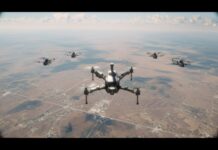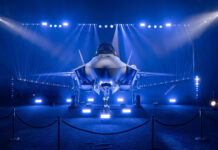BAE Systems’ FalconWorks, a centre for the company’s advanced research and development of cutting-edge combat aviation technologies, has announced a strategic partnership with Lockheed Martin’s legendary Skunk Works Advanced Development Programs arm.
The announcement was made on 9 September, on the first day of the DSEI 2025 defence exhibition in London, following a briefing on BAE Systems’ latest unmanned aerial systems developments.
According to BAE Systems, the partnership will see the two companies’ advanced research and development divisions “work together on a common design that will be rapidly deployable and modular to deliver a range of effects, including disruptive capabilities”.
Drawing on both organisations’ rapid design, prototyping and advanced manufacturing expertise, the collaboration will focus on producing a cost-effective and easily deployable system with multiple launch options. It will initially focus on delivering an electronic warfare and attack capability that would deliver disruptive capabilities and could complement and enhance the survivability of current crewed combat aircraft.
Dave Holmes, managing director of FalconWorks, noted at the partnership launch announcement that the companies “have been working together for over 12 months to determine whether the two organisations could be brought together in this important nascent technology area, looking at common collaborative capabilities in a family of autonomous vehicles”.
O J Sanchez, general manager of Skunk Works, followed by stating, “Our organisations have a history of doing rapid prototyping, advanced manufacturing and design, and it’s really exciting to see what we’re going to be able to do together.
“What we’re talking about,” Sanchez explained, “is being able to design together a vehicle that brings the intersection of a lot of customer needs. … We will do this together in a way that’s cost effective for our customers, easily deployable, and has the expandability that is needed in the marketplace.”
Holmes additionally stated, “What we’ve seen over the last three years [ie during the Ukraine War] is the need for our warfighters to be given the capability that allows them to punch a hall through these very complex and denied electronic warfare environments. … What we’re describing is a family of systems that starts off with an electronic attack capability in the SEAD [suppression of enemy air defences]-type role. … We think we can bring a solution that will be game changing for our end-user community.”















